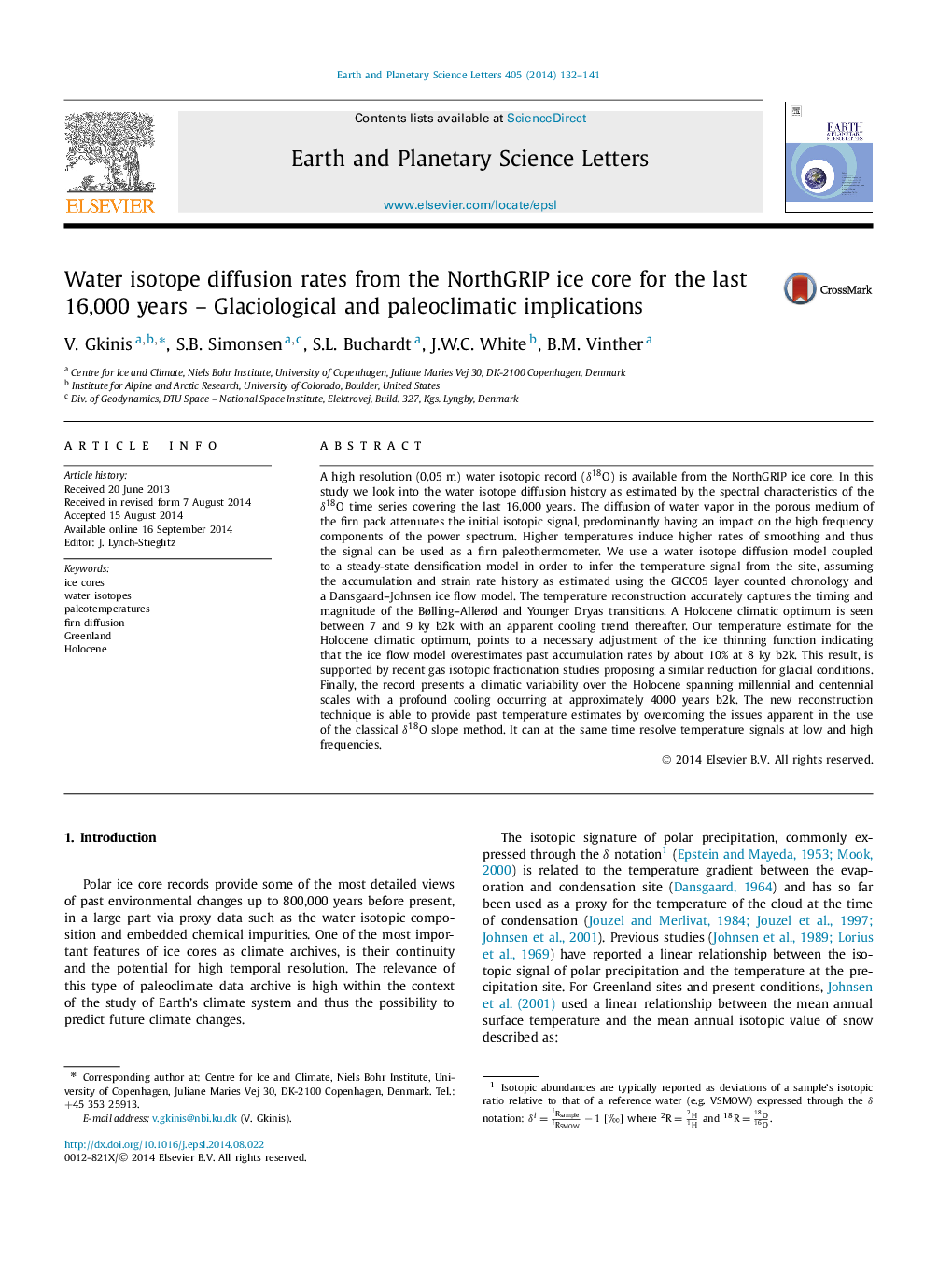| کد مقاله | کد نشریه | سال انتشار | مقاله انگلیسی | نسخه تمام متن |
|---|---|---|---|---|
| 6428922 | 1634751 | 2014 | 10 صفحه PDF | دانلود رایگان |

• We describe a temperature reconstruction technique based on the firn diffusion rates of the 18O signal in ice cores.
• The technique reconstructs actual firn temperatures and overcomes the problems of the traditional 18O local slope method.
• We estimate the diffusion length history for the last 16,000 years from the high resolution NGRIP isotopic record.
• The reconstructed temperature history for NGRIP requires a reduction of the accumulation by 10% at 8 ky b2k.
• A prominent variability at millennial and centennial scales is observed through the Holocene.
A high resolution (0.05 m) water isotopic record (δO18) is available from the NorthGRIP ice core. In this study we look into the water isotope diffusion history as estimated by the spectral characteristics of the δO18 time series covering the last 16,000 years. The diffusion of water vapor in the porous medium of the firn pack attenuates the initial isotopic signal, predominantly having an impact on the high frequency components of the power spectrum. Higher temperatures induce higher rates of smoothing and thus the signal can be used as a firn paleothermometer. We use a water isotope diffusion model coupled to a steady-state densification model in order to infer the temperature signal from the site, assuming the accumulation and strain rate history as estimated using the GICC05 layer counted chronology and a Dansgaard–Johnsen ice flow model. The temperature reconstruction accurately captures the timing and magnitude of the Bølling–Allerød and Younger Dryas transitions. A Holocene climatic optimum is seen between 7 and 9 ky b2k with an apparent cooling trend thereafter. Our temperature estimate for the Holocene climatic optimum, points to a necessary adjustment of the ice thinning function indicating that the ice flow model overestimates past accumulation rates by about 10% at 8 ky b2k. This result, is supported by recent gas isotopic fractionation studies proposing a similar reduction for glacial conditions. Finally, the record presents a climatic variability over the Holocene spanning millennial and centennial scales with a profound cooling occurring at approximately 4000 years b2k. The new reconstruction technique is able to provide past temperature estimates by overcoming the issues apparent in the use of the classical δO18 slope method. It can at the same time resolve temperature signals at low and high frequencies.
Journal: Earth and Planetary Science Letters - Volume 405, 1 November 2014, Pages 132–141